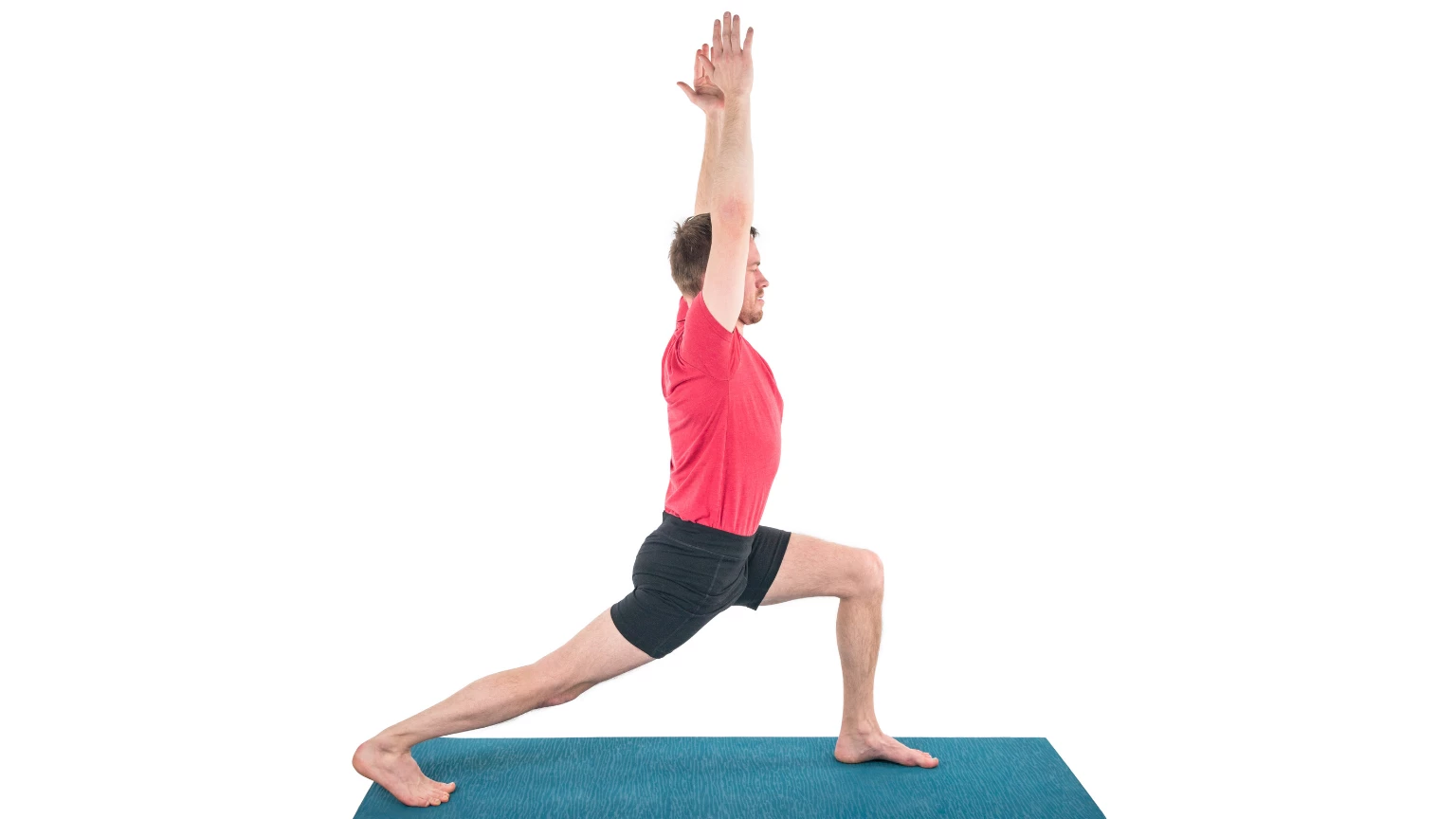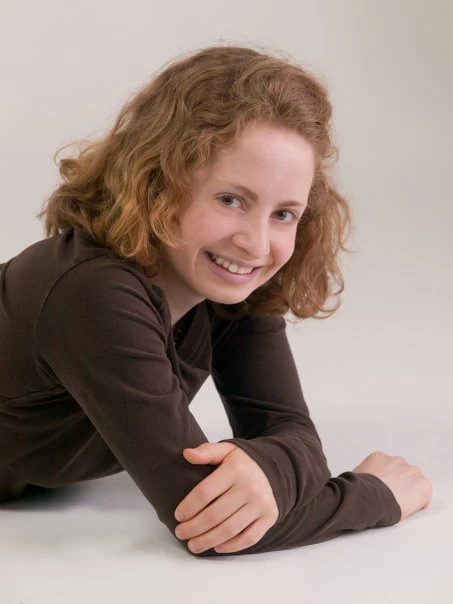Be Unshakeable: Find Tadasana in 3 Standing Yoga Poses

Mountains—they feel unmovable, unshakable, unrelenting, and timeless. To our human perception, they’re astoundingly expansive in three directions (including through a rooting into the earth). Tadasana (Mountain Pose) is the yoga asana in which we most clearly seek to embody these qualities. Tadasana’s main actions can ideally help complex, challenging standing poses feel as rooted, unshakeable, and expansive as mountains—at least as far as that’s possible for humans!
Read on for how we can experience these qualities in three different standing poses. We can then perhaps bring these qualities into other poses. Even when so much in life can feel capable of tossing us about and shrinking us down, we can feel unshakable off our mats as well. Om Shanti, yogis!
Practice these poses all on the right side first, for five to ten breaths. Then transition to the left side.
Virabhadrasana I (Warrior I Pose) 
1) Stand in Tadasana with your feet hip-width apart at the end of a nonskid yoga mat so that most of your mat is spread out in front of you.
2) Step your left foot forward, about three feet in front of the other, perhaps further if your legs are on the longer side. Ground down through the heel of your back (right) leg, so that your right foot is at a thirty- to a sixty-degree angle. Your unique anatomy will determine what will be most comfortable for you.
3) If you feel unsteady or are experiencing any joint pain, shorten your stance by stepping your back foot a bit further forward, and widen your stance from left to right by stepping the same foot closer to the right outer edge of your mat.
4) As when practicing Mountain Pose, fix your drishti (gaze) undoubtedly ahead. Breathe into the steadiness that this action brings. Raise your arms to a number “11” shape around your head, so that your arms frame your ears. Lift your chin slightly, to open up space for breath and energy to flow.
5) As we also ideally do in Tadasana, firmly ground your legs. This action begins in your feet. Ground down through your big toes and outer edges of your feet, yet lift your “insteps” (aka inner arches).
6) Ground as you breathe out, your hips gliding forward, but not so much that your front knee goes past your front ankle. If this happens, you may need a longer stance. As you breathe in, lift your torso—all the way up to the top of your head— and off your hips.
Anjaneyasana (High Crescent Lunge) 
1) From Warrior I, lift your back (right) heel so that the knee of your back leg is facing your mat. Let your back heel slide slightly backward, so that you have a bit longer stance. If you need to, lower your torso and place your hands to your mat while making this change.
2) As in Tadasana, steady your drishti and lift your chin slightly so that it’s parallel to your mat. As you breathe in, lift your bottom ribs further away from your hips, creating upward energy (prana) to rise out of the top of your head. Reach your arms toward the sky so that they frame your head.
3) Feel your thighs wrap outward. At the same time, draw your inner thighs in toward each other as if magnetized. Keep a slight bend in your back knee, yet feel the quadriceps (front leg muscles) activate and raise the leg just a bit higher as if the leg was in Phalakasana (Plank Pose). If this full version of the pose feels like too much for you today, lower your back knee.
4) Just as in Warrior I, as you exhale, feel your hips glide forward to sink deeper into the pose—again, not so far that your front knee travels past its same ankle. If that’s happening, step farther back to make a longer stance. Feel the rooted, grounding energy of apana.
5) At the same time, maintain the lift through your torso as you inhale. Explore expanding on this lifting action each time you inhale. Just as in our best practice of Mountain Pose, all of these actions together help to balance the body so that it is stable and strong, yet soft and receptive.
Natarajasana (Dancer Pose) 
1) From Crescent Lunge, slowly and carefully shift weight onto your front (left) foot and let your back (right) foot lift off your mat. Bring the back (right) knee forward to meet the left knee, so that your inner knees are touching. Return to Tadasana.
2) Bending your right knee, bring your right heel to your bum, holding the inside edge of your foot with your right hand. Extend your left arm upward, next to your left ear.
3) Begin kicking your right foot into your right hand, so long as your flying (right) knee isn’t winging out to the side. If that’s happening, then lower the knee, because that winging action can damage the joint.
4) Keep a little lift, like a mini Bitilasana (Cow Pose), behind your heart, even as the rest of your torso descends, to help with balance. This creates the same proud, strong lift of the chest that we find in Mountain Pose. Here, breath and energy can flow.
5) Maintain that feeling of the thighs spiraling out, with the inner thighs magnetizing in toward each other, same as in Mountain Pose. Lift your chin and heart to create space for your breath and energy to flow. At the same time, let the spiraling and magnetizing actions of your thighs make you feel as stable and unshakable as a mountain.
Yoga for Chronic Pain: Yogic Keys for Relieving, Managing, and Eliminating Persistent Pain Issues.-Study with YogaUOnline and Yoga Therapist, Susi Hately.
Yoga For Every Body: How to Adapt Poses for Different Situations and Conditions and Purposes a course from YogaUOnline and Olga Kabel.
 Kathryn Boland is an RCYT and R-DMT (Registered Dance/Movement Therapist). She is originally from Rhode Island, attended The George Washington University (Washington, DC) for an undergraduate degree in Dance (where she first encountered yoga), and Lesley University for an MA in Clinical Mental Health Counseling, Expressive Therapies: Dance/Movement Therapy. She has taught yoga to diverse populations in varied locations. As a dancer, she has always loved to keep moving and flowing in practicing more active Vinyasa-style forms. Her interests have recently evolved to include Yin and therapeutic yoga, and aligning those forms with Laban Movement Analysis to serve the needs of various groups (such as Alzheimer’s Disease patients, children diagnosed with ADHD, PTSD-afflicted veterans – all of which are demographically expanding). She believes in finding the opportunity within every adversity, and doing all that she can to help others live with a bit more breath and flow!
Kathryn Boland is an RCYT and R-DMT (Registered Dance/Movement Therapist). She is originally from Rhode Island, attended The George Washington University (Washington, DC) for an undergraduate degree in Dance (where she first encountered yoga), and Lesley University for an MA in Clinical Mental Health Counseling, Expressive Therapies: Dance/Movement Therapy. She has taught yoga to diverse populations in varied locations. As a dancer, she has always loved to keep moving and flowing in practicing more active Vinyasa-style forms. Her interests have recently evolved to include Yin and therapeutic yoga, and aligning those forms with Laban Movement Analysis to serve the needs of various groups (such as Alzheimer’s Disease patients, children diagnosed with ADHD, PTSD-afflicted veterans – all of which are demographically expanding). She believes in finding the opportunity within every adversity, and doing all that she can to help others live with a bit more breath and flow!




